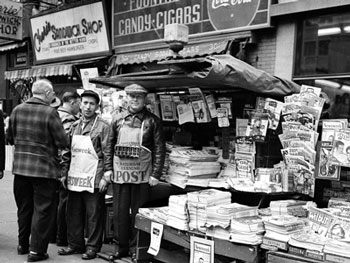
By DIEGO GIUDICE
After five years without visiting the USA, last month I had the opportunity to fly for a few days to San Francisco, California. I always enjoyed the U.S., among other things because I could catch up with a vast variety of newspapers and magazines of the highest quality, a fact that over the years inspired me and helped me to glimpse the paths we should walk through. This time was quite different.
Just arriving to my hotel, I found in my room a courtesy copy of a thin version of the San Francisco Chronicle, one of the more relevant media of the country. Last time I browsed a hard copy, it was more than 100 pages full of news, stories and great photography.
I thought that his copy was so thin because was just a free copy for hotels and visitors. So went across the street to buy the “real” San Francisco Chronicle. Surprise: the copy at my hotel and the “real one” were the same.
I bought two other newspapers covering the bay area of San Francisco and met the same kind of anemic versions of thriving and vibrant media I got to know years ago. All of them had few pages, few stories and quite discreet pictures.

But the anemia had ravaged the newsstand. Many of the magazines that were a reference for the global publishing industry are still there, but most of them shrank. Others, even myths of the industry like Newsweek, are not there anymore.
But there was a curious paper version of the Chicago Sun Times, the very same that last month fired all of their staff photographers, including a Pulitzer Prize winner. Now the newspaper is illustrated with photos taken by reporters with iPhones.

Internet seems to sign the death warrant of newspapers and magazines, even those of international fame because their were pioneers with their stories and photos. Some blame the same media for not finding out a way to adapt to the unavoidable changes of the world.
Maybe within the Internet a better journalism will emerge. Maybe all photographers having a hard time now will find a way to make a living on online media.
All this is possible. But I could not help, on the long flight back to Argentina, to feel some bitterness at I thought about of all this.


